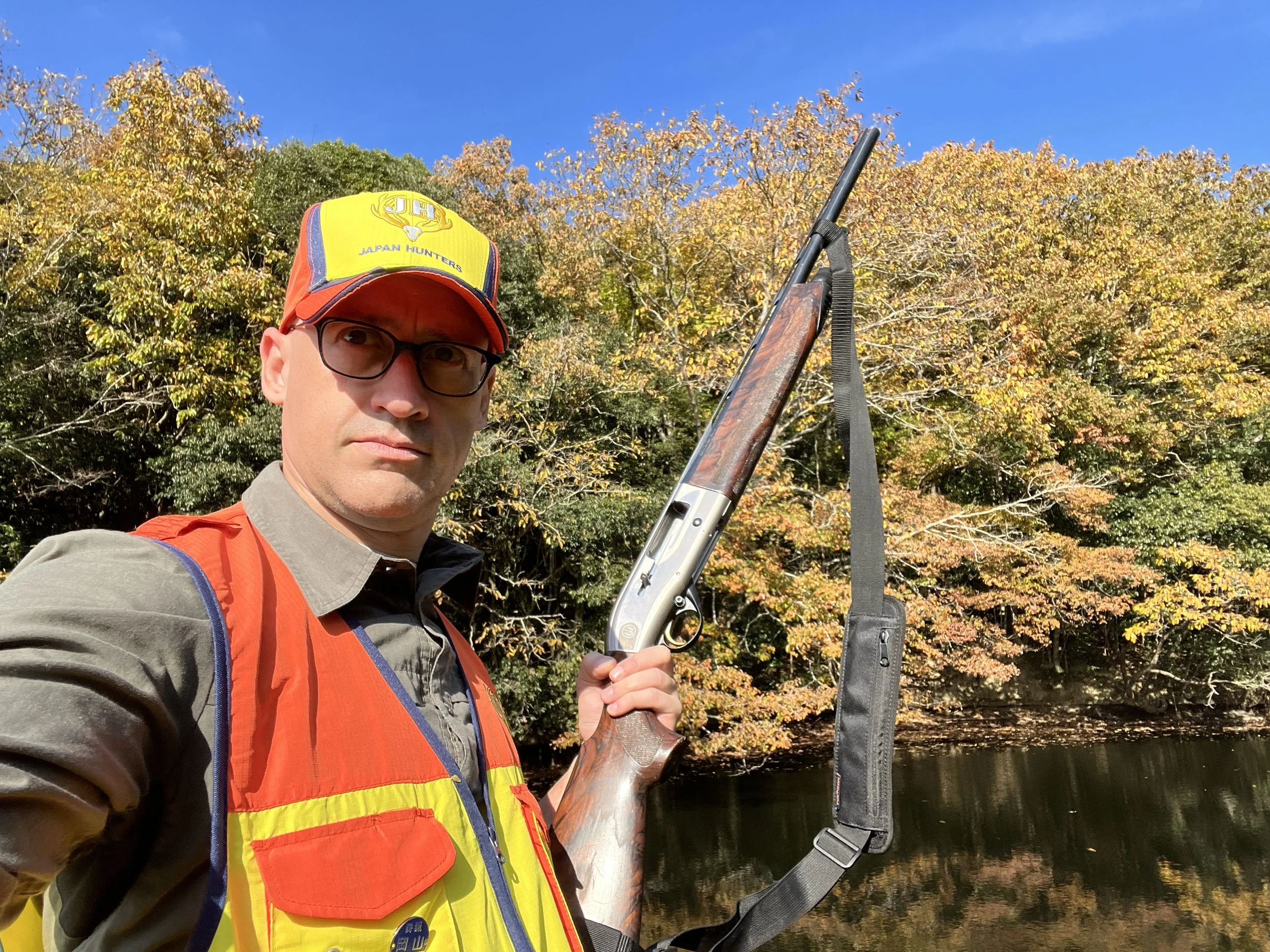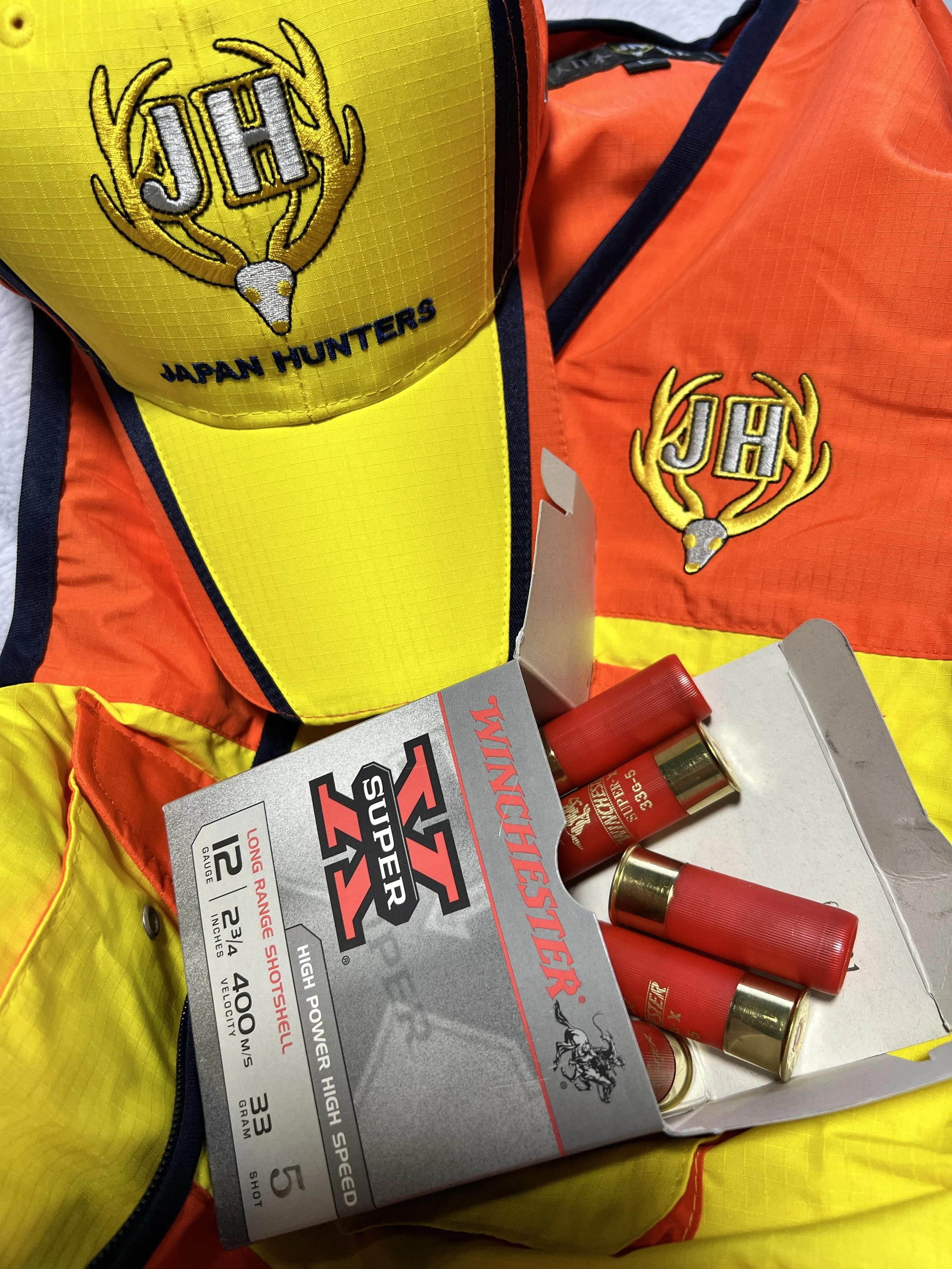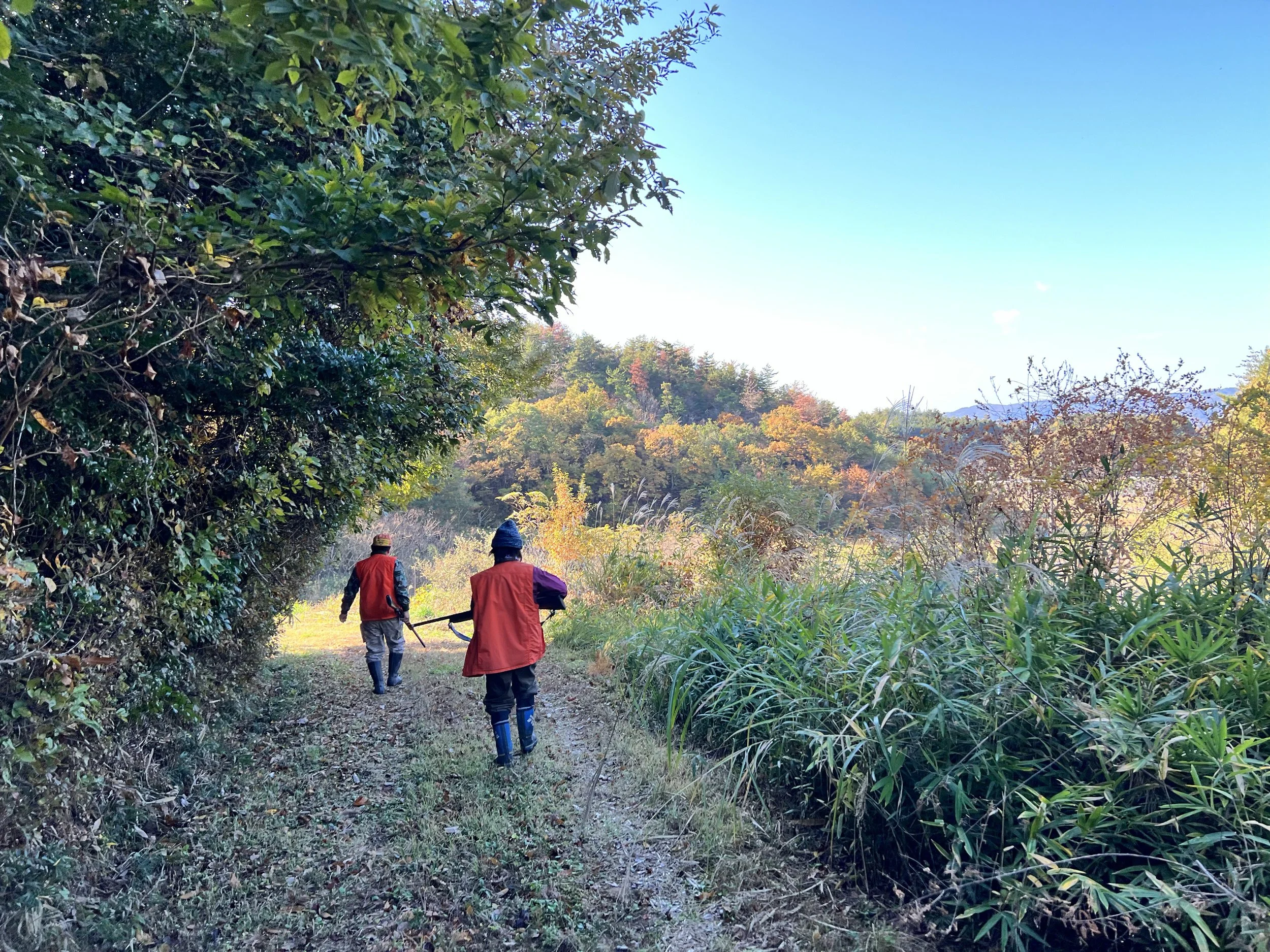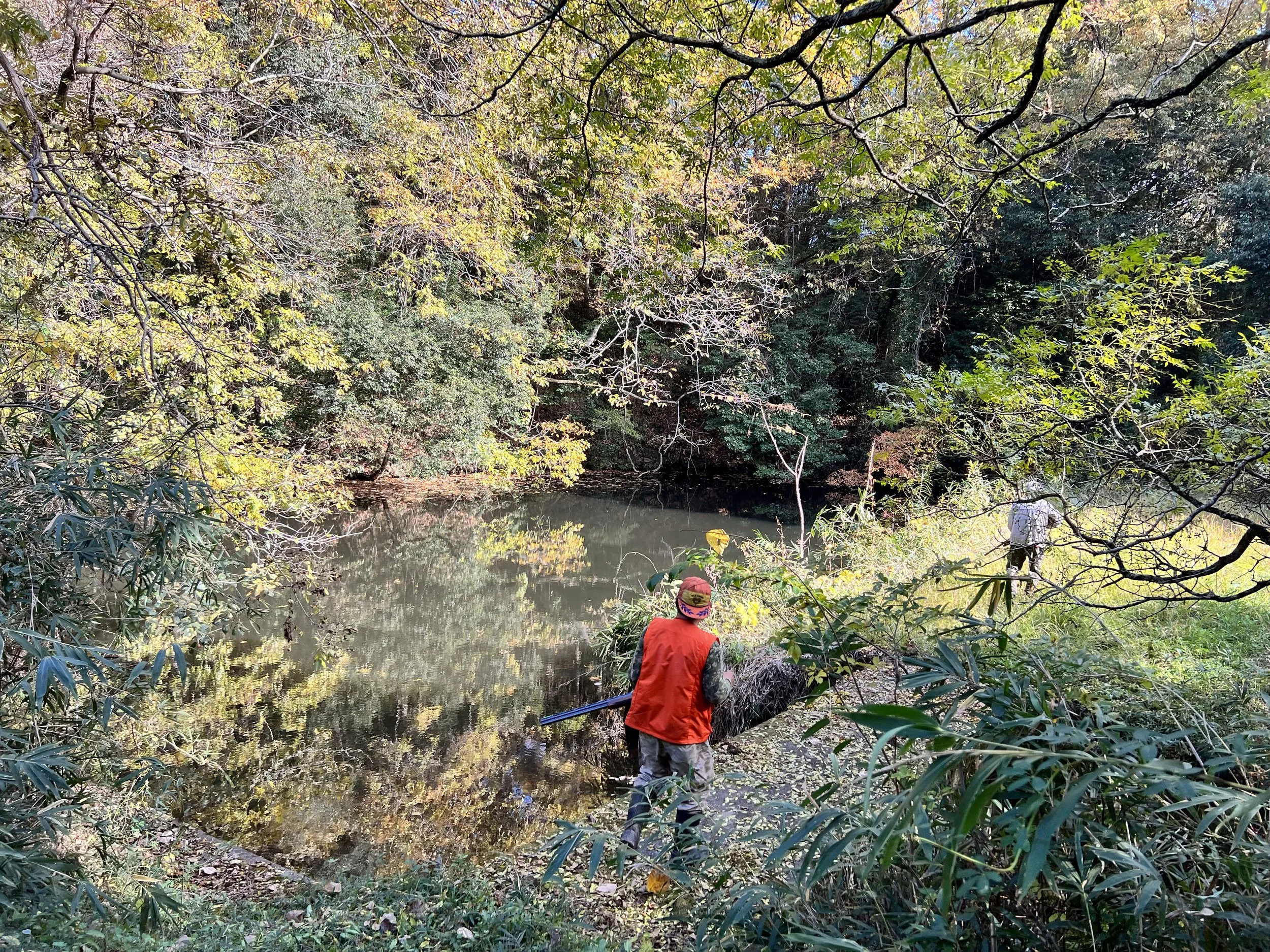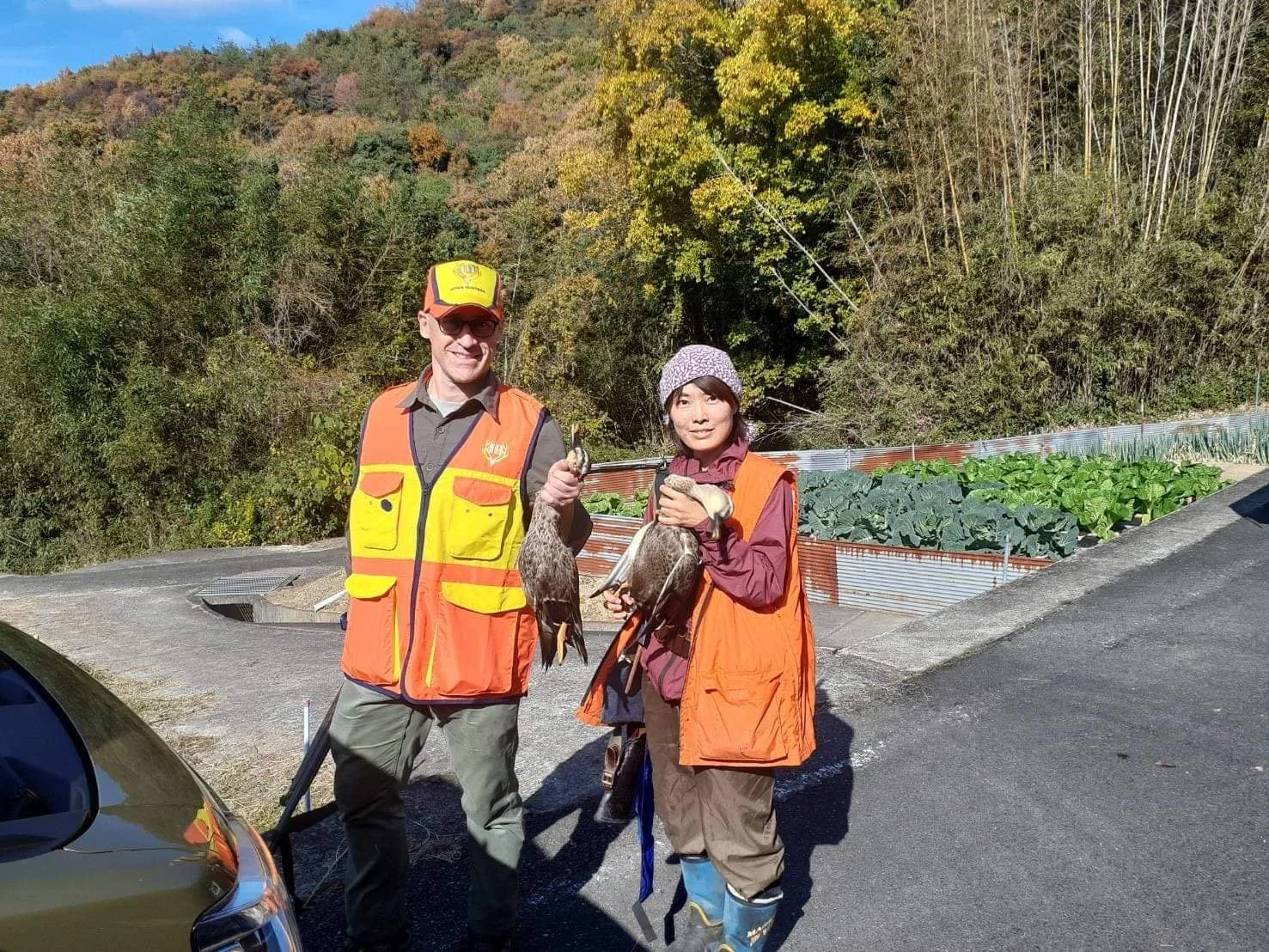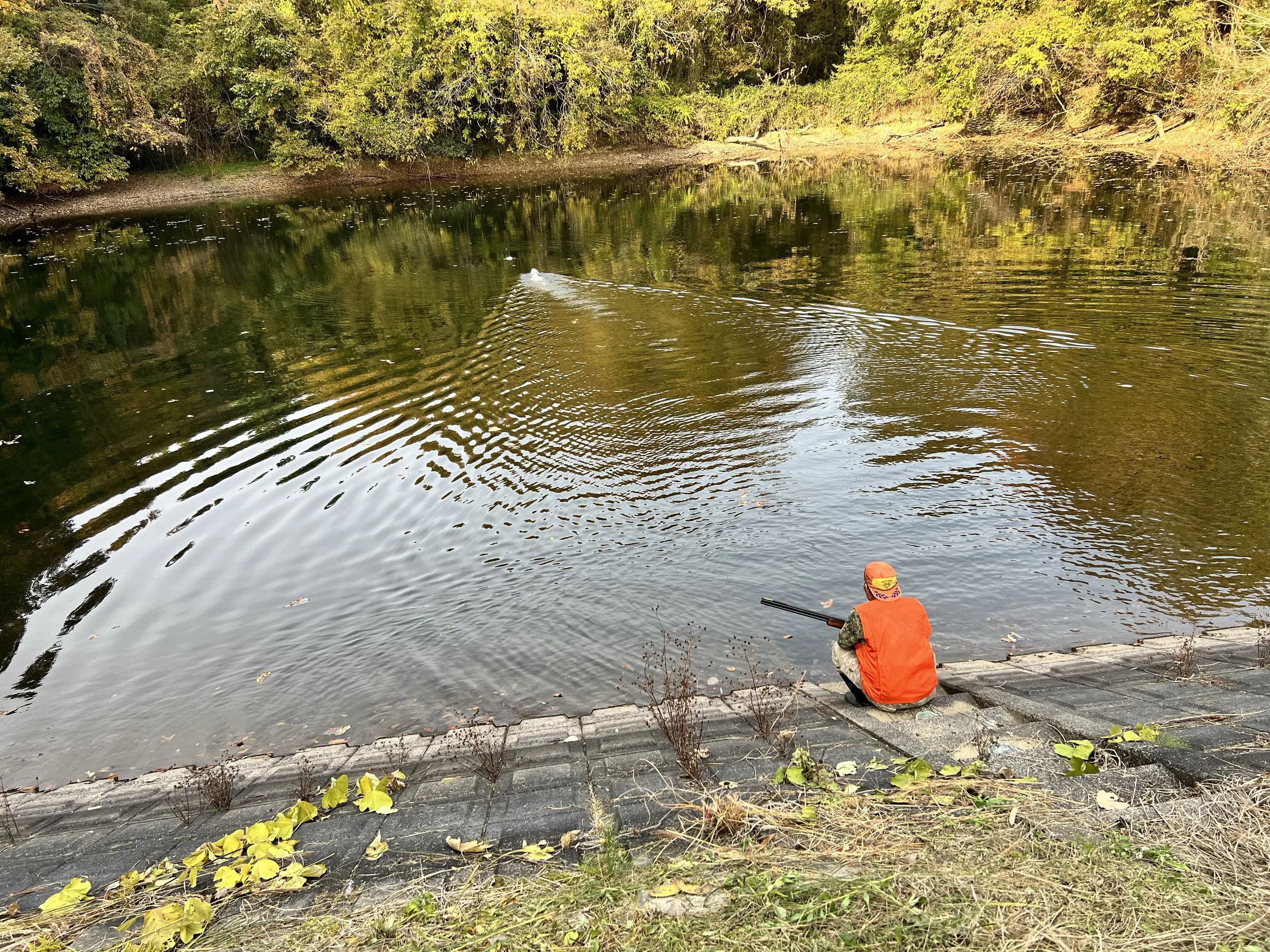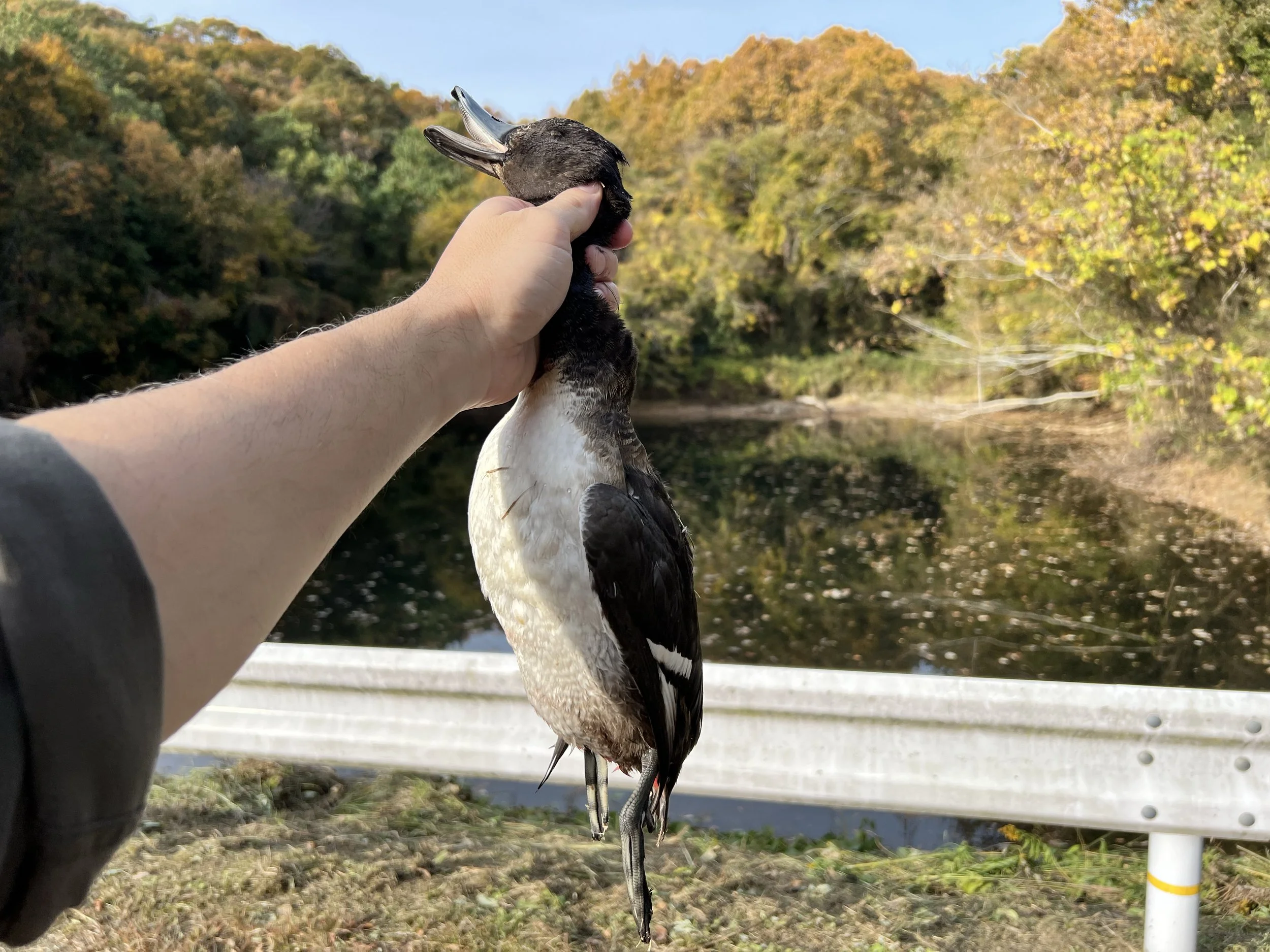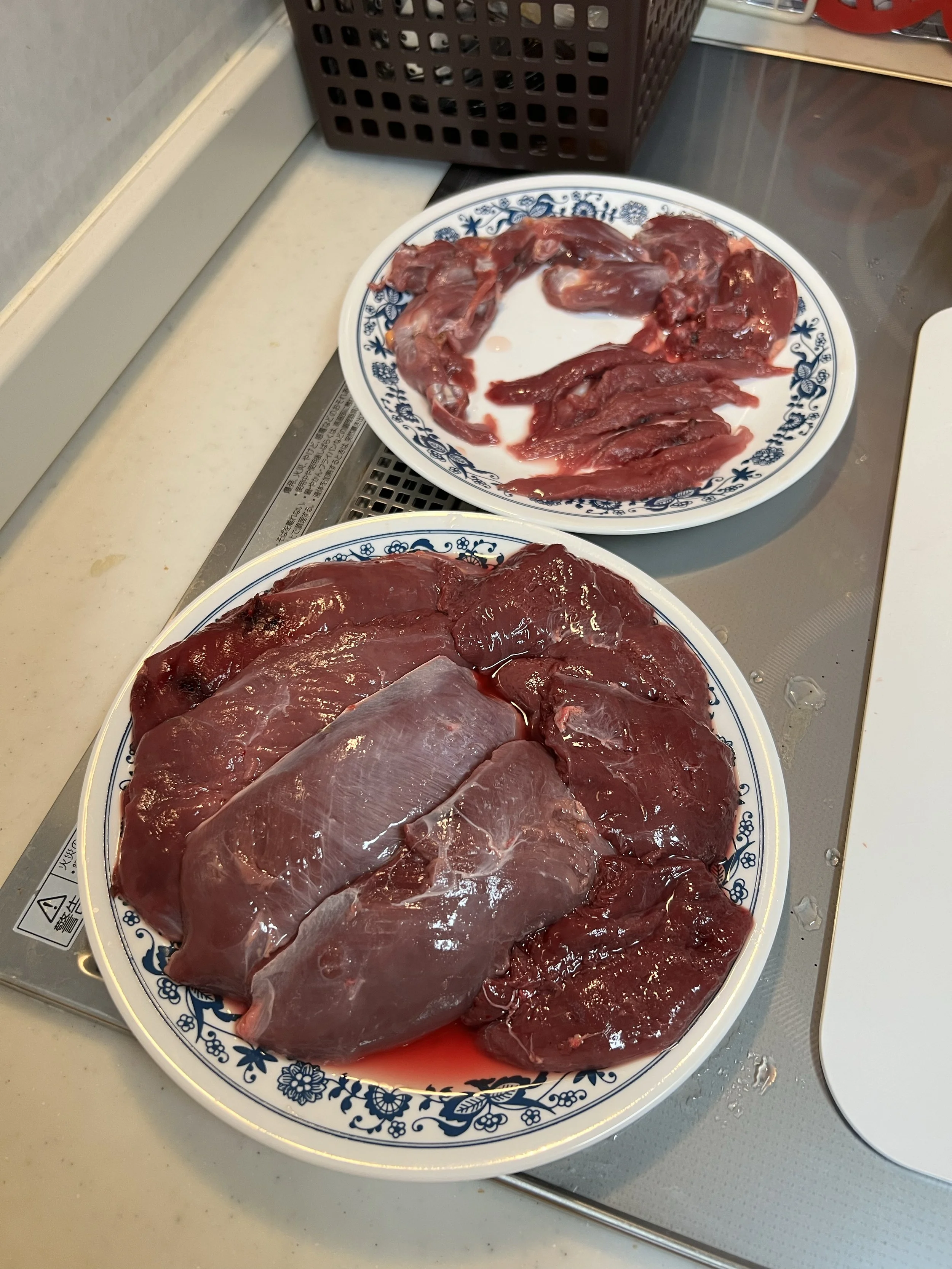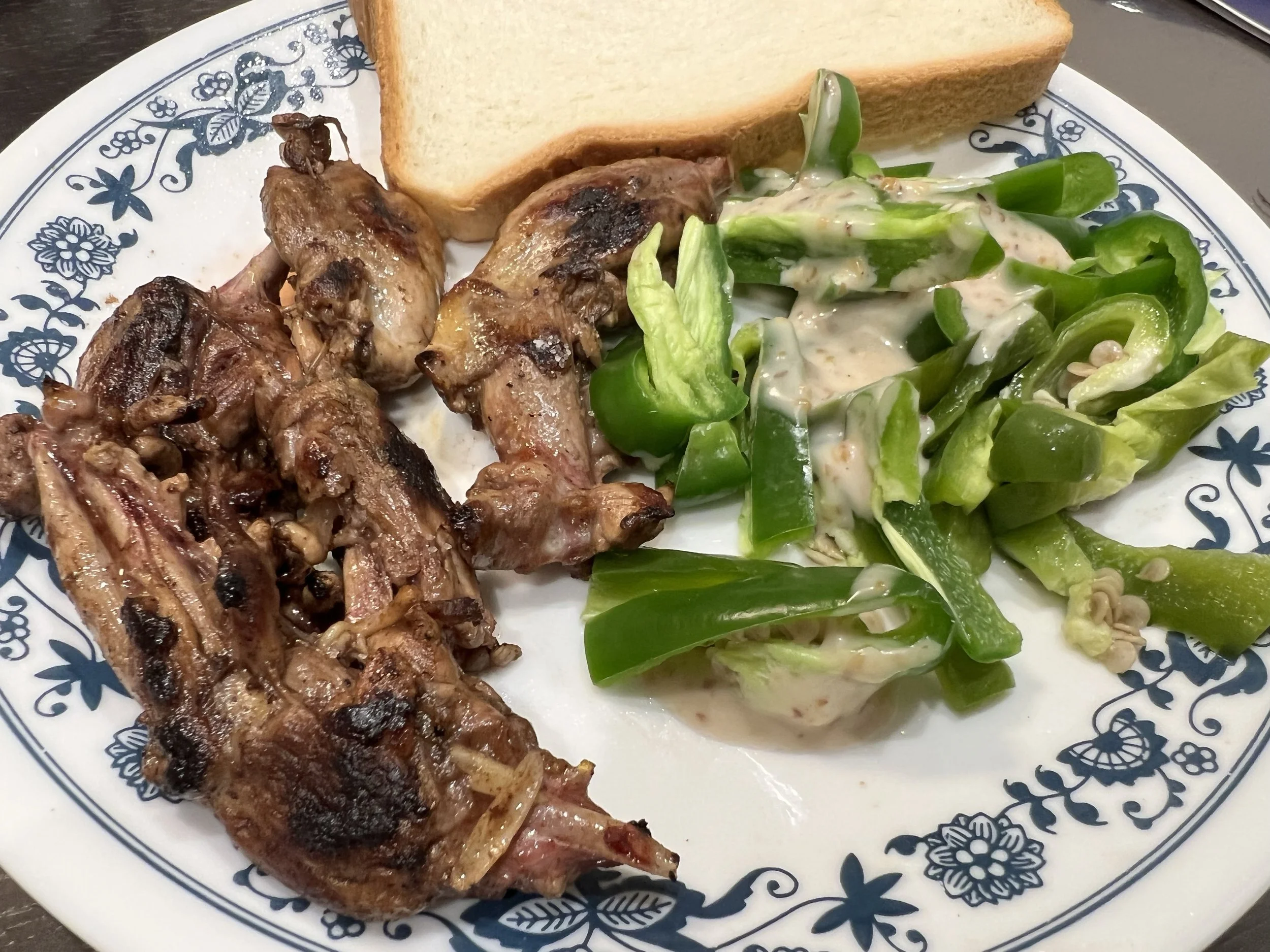My first hunt in Japan
My first hunt in Japan (or anywhere, for that matter)
November 21, 2022
More than a year ago, I decided that I would like to try hunting. Gun ownership laws are very strict in Japan, and it took me just over a year to obtain both my gun and hunting licenses. I had just finished all of the necessary paperwork, licensure, insurance sign up and first-ever skeet shooting practice by the middle of last week, which was perfect timing, because hunting season started on November 15th.
Hunting season here is basically Nov 15th to February 15th, and includes all huntable game, which are mostly deer and wild boar, with a limited bear season, and also includes many kinds of birds, which are mostly waterfowl (ducks). Lots of hunters are aging-out here, so the overall number of active hunters is going down, while the number of crop- and garden-eating deer and boar is going up. So, during the season, you can get a deer and a boar a day all season long (if you can). For ducks, the daily limit is five birds.
Hunting can only be done with a gun or a trap, there is no archery hunting. For guns, you must start with a shotgun, and if you own one for 10 years, you can apply to get a rifle license. So, most people are hunting everything with shotguns, birdshot for birds, and slugs for deer and boar.
I was invited by my hunting friend A-san to join a duck hunt. Not knowing a dang thing about duck hunting, I asked for more information from my two favorite teachers, Google-sensei and YouTube-sensei. What I learned online and what I actually experienced were quite different. From what I gather (and I could be wrong), in the US, most duck hunting is done early in the morning, near big and open bodies of water, and often involves the use of decoys, duck calls, hip waders, full camouflage and some kind of duck blind. None of those things were true about my hunt.
I wasn’t sure what to wear because I was fairly certain that we would all be wearing hunter’s orange, which in my mind negated the utility of camouflage. So, I just wore some khaki green and brown clothing that I thought wouldn’t stand out too much. It turns out that we all wore some combination of orange vests and/or hats. I wore my brand-spanking-new JH (Japan Hunter) vest and hat that I got with my Hunter’s Association membership the previous week. I also bought a nice pair of binoculars, which I promptly forgot at home in my rush to get out the door, but I will definitely take next time, as they are useful for spotting ducks hiding in the shade at the edge of ponds.
For ammo, I used Winchester 2¾ inch 33 gram #5 shot shells. These were recommended to me by Mr. Suyama, the local gun shop owner. I saw a huge variety of opinions on shell selection online, but I just went with his recommendation. I thought they were steel shot, but when I was cleaning my birds I found a lead pellet, so I guess not. A quick search online told me that lead shot will be gradually phased out from 2025-2030 here. I bought a box of 25 shells having no idea if that would be enough for a day’s hunting, but it was fine beacuase I only ended up taking 13 shots. That could have easily been only 6 or 7 shots if I were actually proficient at hitting things. An experienced hunter told me that on his best days, he can bag his limit with just one or two shots, by hitting multiple birds with one shell.
I met A-san and her husband around 8:30 and we drove over to Mr. S’s place. Mr. S offered to lead us all around to the many, many duck hunting spots he knows. We were joined by Mr. K, who is Ai’s hunting teacher and has decades of experience. We were later joined by a Mr. E, who ran into us while we were out and then raced home to get changed and join us. I was informed that my car had to stay, because where we were going only kei-trucks (very small utility trucks) would fit down the narrow mountain roads. So, I jumped in with Mr. K, who turned out to be a wonderfully friendly person who patiently answered all of my beginner questions all day long and passed on tons of knowledge to me.
By 9:30ish, we were at our first pond. By the end of the day, we had visited over 25 ponds in the area. The vast majority of ponds we went to are small (less than 50 yards across) and manmade. Japan is about three quarters mountainous and is roughly the size of California. California has a population of about 40 million people, while Japan had 125 million. This means that all usable land is occupied, from the flat plains of the big cities like Tokyo and Osaka all the way up just about every mountain valley. As you get into the hills and mountains, the agricultural land tends to go up in tiers of flat rice fields. And above those fields, usually nestled up in the top of a valley, are manmade ponds that were built before farmers had electric water pumping technology. The rice fields were irrigated from these gravity powered reservoirs. These small ponds are almost always surrounded by forest and the overhanging trees are the perfect place for ducks to quietly sit in the shade and relax during the day.
So, our usual plan of attack, which we executed over 25 times, was this:
1. Drive our 4 truck convoy up and down some curvy backroads until we turned off on a narrow farmer’s lane that usually wouldn’t fit a regular sized car or truck.
2. Pull up within walking distance to the pond and get out of our cars as quietly as possible.
3. Carry our guns in thin cloth gun covers until we got closer to the pond.
3a. The law states that you shouldn’t walk around with your gun revealed while you are on roads or near public places. And you should legally also have your gun covered up while transporting it in a vehicle. So for this kind of pond-jumping hunting, to comply with the law but to be able to quickly get out and put away your gun 25 times in one day, everybody keeps their gun in these thin cloth sheaths, which are easy to take off and stuff into a hunting vest pocket. Of course, I didn’t know this and only had a zippered soft case for my gun, so I was giving the zipper a good workout. At least I had that though, because until last week I only had a short hard case which the gun needs to be disassembled to fit into.
4. Most of the ponds have steep banks, so we would load our guns and then slowly creep up the bank and pop our heads up to see if there were any ducks. Depending on the terrain and the safe direction of fire, sometimes one of us would sneak around the side and try to scare the birds to fly in a direction we could fire.
5. If no birds, go to step 8.
6. Fire!
6a. The shooting part happens fast and isn’t easy for beginners. You have to identify if the birds are ok to shoot, pick a target, track it and fire all within about 2 seconds. Maybe less than two seconds in some cases. There were a lot of Mandarin ducks (鴛鴦、おしどり) that are not legal to hunt. You also have be conscious of the direction you are shooting, as you are not allowed to (nor should) shoot towards roads or houses.
7. Check if any scared stragglers fly up in a second wave.
8. Unload, collect any birds, walk back to trucks and move on to the next pond. We moved fast, jumping in and out of the trucks without wasting any time.
I’m sure this style of duck hunting must exist outside of Japan, but I didn’t see anything like it during my (limited) YouTube research.
We drove around to a bunch of ponds and had bagged 4 birds by lunch time. We stopped for a quick lunch at a ramen shop and then went back out for the afternoon. A few times the birds landed in the water but Mr. S’s dog Nana was a great bird dog and dove in to retrieve them for us. At one pond with a dogleg bend, we had a large group of ducks fly up and four of us fired multiple times. We could only see one bird in the water and we got Nana out of the truck to help us. Instead of getting the bird we could see, she took off into the thick woods, only to return a few minutes later with a bird that had fallen around the dogleg and we didn’t even know was there. I was really impressed.
We ended the day with 6 birds. The bird types we got were Eastern spot-billed duck (カルガモ、軽鴨), mallard (マガモ、真鴨), tufted duck (キンクロハジロ、金黒羽白) and Wigeon duck (ヒドリガモ、緋鳥鴨). I took 13 shots, definitely hit one, probably hit another and possibly winged another bird which was able to fly enough to escape. When a group of birds flies up from the water, everybody fires at the same time and in the cacophony it is sometimes difficult to tell who hit what. More than half of the ponds had no birds in them, or birds we couldn’t hunt. We got at least one bird at most of the ponds that had birds we could shoot at.
I was given 3 of the birds to take home, including the tufted duck that I shot. This was way more than I deserved, but everybody was amused when I told them that I had no idea how to dress nor cook the birds, and they wished me good luck. I was a little disappointed that we didn’t do a group photo with the ducks all lined up on the truck like I see hunters in America do. Maybe next time I will suggest it. Then Mr. K had me follow him back to his house, which is pretty near to my own, so he could give me some frozen meat from a boar that he had shot just a few days prior. His wife also ran out at the last minute to give me some fresh persimmons from the tree in their yard.
I finally got home around 6 and set to learning how to get the meat from a duck. There seems to be two main ways. One is to pluck all of the feathers off to preserve the skin and roast it like you would a whole chicken or turkey. Yeah, that seemed pretty daunting, so I went for option two, which is to expose the breast meat and yank the breastbone (and wings!) out altogether. From there it isn’t hard to slice the breast meat off. After that there is just a little meat left on the legs to harvest. I ended up with a decent amount of meat from the three birds.
Before our hunting party broke up, there was much discussion and advice about cooking various game meats. This was mostly over my head in both Japanese level and cooking experience. So, I just kept it simple, and pan fried some thin slices of breast meat with a bit of olive oil. I’ve had duck before, but I wanted to check out the natural flavor free of any marinades, herbs or spices.
It was delicious! Very tender and flavorful. My kids loved it too and immediately asked for more after their first sample. We ate about one bird’s worth and froze the rest to use in the not-too-distant future.
All in all, a great day! The weather was absolutely gorgeous, which I’m sure I will long for when I’m hunting in February. Everybody was very encouraging and ready to share skills and knowledge with me. I don’t think I could have asked for a better first hunt!

